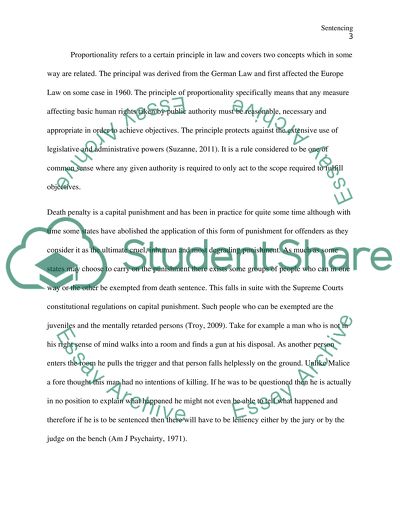Sentencing Assignment Example | Topics and Well Written Essays - 750 words. Retrieved from https://studentshare.org/law/1462616-sentencing
Sentencing Assignment Example | Topics and Well Written Essays - 750 Words. https://studentshare.org/law/1462616-sentencing.


